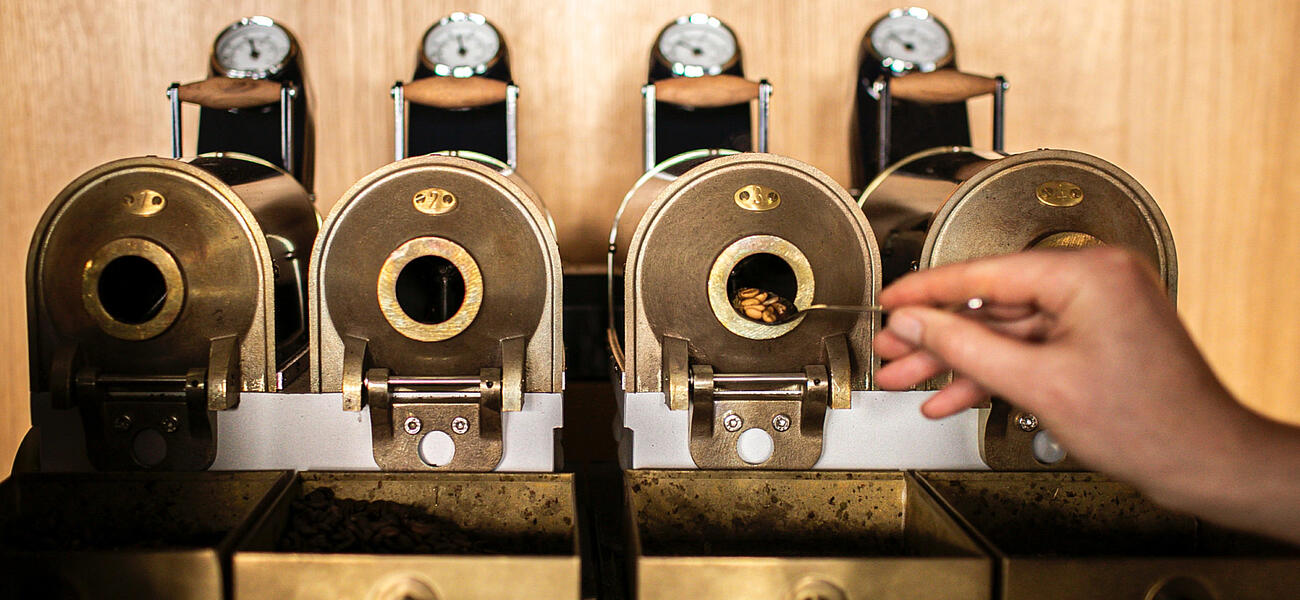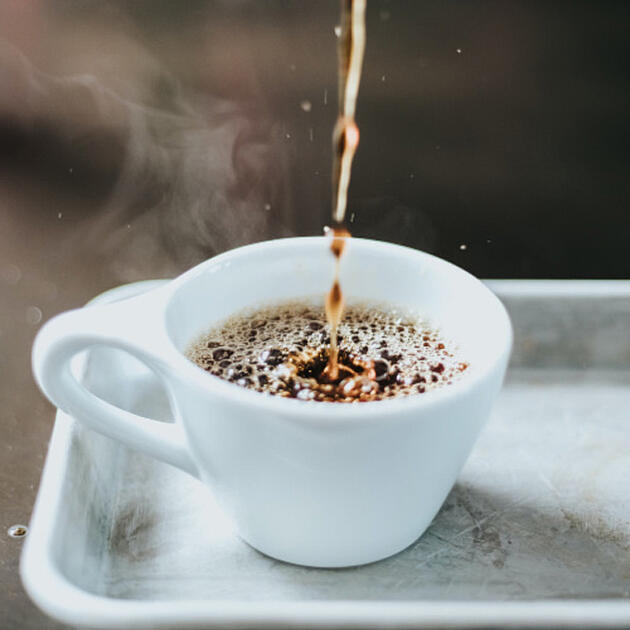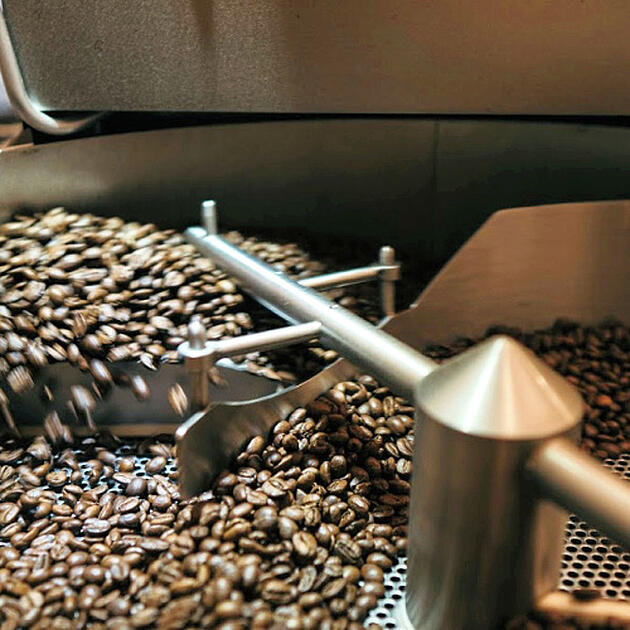Roasting coffee: Expert facts that you need to know
How roasting impacts the flavour of your coffee
Our Coffee glossary is an A–Z of special terms from the world of coffee. This article looks at R for Roasting. Light and fruity, spicy and nutty or even chocolatey – the flavours and aromas of your coffee are not only influenced by its country of origin, but also by how it is roasted. Each coffee’s individual roast profile brings out certain characteristics in the cup. And, by the way, this also makes coffee more palatable, because roasting reduces acidity. That’s why the more acidic coffee beans from Kenya or Colombia are roasted darker than those from Brazil, which tend to be milder. Read on to discover exactly how roasting works and what impact it has on the taste of your coffee.
What happens when coffee beans are roasted?
Using a traditional drum roaster, green coffee beans are heated at temperatures between 210°C and 225°C. This causes the water in the beans to evaporate and the beans to slowly expand. And then – to use another technical term for the pros – the “Maillard reaction” begins.
After a few minutes, the pressure becomes so great that we hear the “first crack”: the beans suddenly increase in volume and crack with a loud popping sound. In the case of lighter roasts, roasting will then continue for a short time before the beans are placed on a sieve and cooled with air.
How does roasting affect the coffee’s flavour?
Beans that aren’t roasted beyond the “first crack” tend to be beige rather than brown and will be light and fruity. These are referred to as a light roast. If the coffee beans are roasted longer in the drum, they become darker in colour. Medium roasts are characterised by their particularly good balance of acidity, sweetness and light roasted aromas. We achieve a medium roast after around 9 to 12 minutes in the roaster.
Continuing to roast further will eventually lead to another popping sound after 12 to 15 minutes: the “second crack”. This is a sign that the bean’s cell structures are beginning to break down and that the coffee’s oils are being driven out of the bean. In moderation, this can be quite desirable. After all, there are many admirers of a strong, full-bodied espresso with a distinct roasted aroma – not only here, but especially in the south of Europe.
Which roasts suit which kind of coffee?
Due to their aromatic flavour, dark roasts are often used for espresso and therefore in cappuccino and latte macchiato. In “Espresso d’Oro” – the darkest roast in the Dallmayr product range – you can even taste a hint of cocoa. In terms of flavour, medium roasts, i.e. medium-brown beans, are true all-rounders. They are suitable for café crème or classic filter coffee, for example. Light roasts are best enjoyed without milk, as this allows you to better appreciate their pure flavour and aroma.


